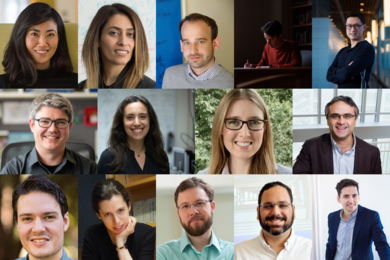School of Science welcomes new faculty in 2023
Sixteen professors join the departments of Biology; Chemistry; Earth, Atmospheric and Planetary Sciences; Mathematics; and Physics.
3 Questions: The first asteroid sample returned to Earth
Richard Binzel describes how asteroid dirt and dust delivered by OSIRIS-Rex, with help from MIT, may reveal clues to the solar system’s origins.
3 Questions: A bigger, better space-ripple detector
The MIT-led Cosmic Explorer project aims to detect gravitational waves from the earliest universe.
Newly discovered planet has longest orbit yet detected by the TESS mission
The frosty gas giant was discovered in a system that also hosts a warm Jupiter.
Fourteen MIT School of Science professors receive tenure for 2022 and 2023
Faculty members were recently granted tenure in the departments of Biology, Brain and Cognitive Sciences, Chemistry, EAPS, and Physics.
3Q: Exploring the universe’s “first light”
After the James Webb Space Telescope’s first year in service, astronomers are awash in new observations that illuminate the oldest stars and galaxies.
A telescope’s last view
Astronomers discover the last three planets the Kepler telescope observed before going dark.
Gravitational-wave detectors start next observing run to explore the secrets of the universe
The next run will be the most sensitive search yet for gravitational waves.
Study doubles the number of known repeating fast radio bursts
Statistics tools support the idea that all radio bursts may repeat if observed long enough.
George Clark, professor emeritus and X-ray astronomy leader, dies at 94
Longtime MIT faculty member led investigations into cosmic-ray physics and gamma-ray and X-ray astronomy.
MIT School of Science announces 2023 Infinite Mile Awards
Seven staff members honored for their dedication to the School of Science and to the Institute.
Research pulled Michael McDonald in and it won’t let go
Since his first encounter with a research telescope, the astrophysics professor hasn't slowed in his quest to understand the behavior of galaxies.
In a first, astronomers spot a star swallowing a planet
Earth will meet a similar fate in 5 billion years.
Astronomers detect the closest example yet of a black hole devouring a star
The event was spotted in infrared data — also a first — suggesting further searches in this band could turn up more such bursts.














